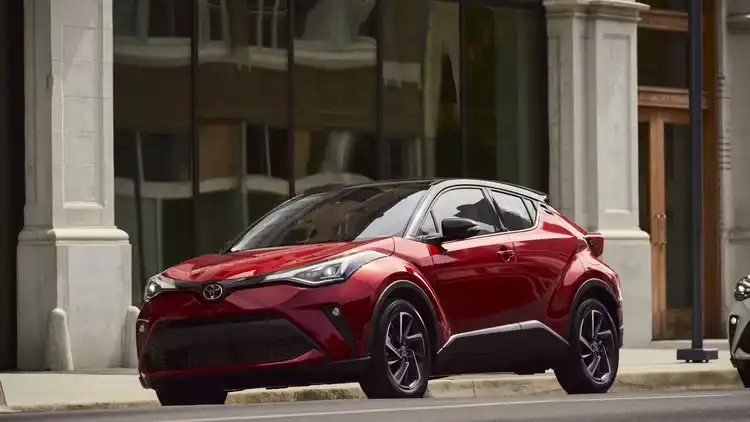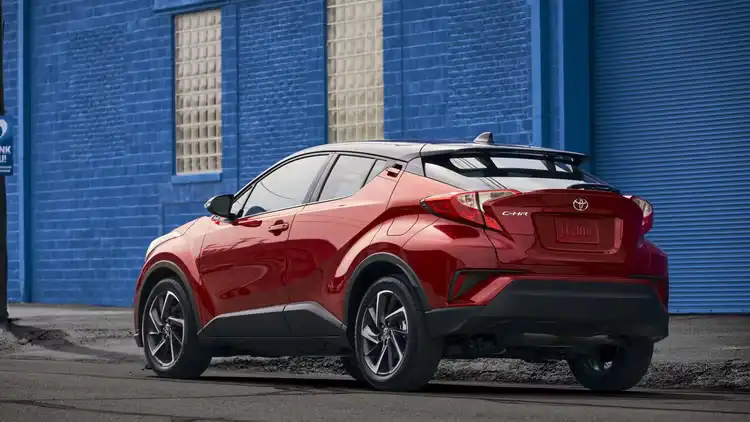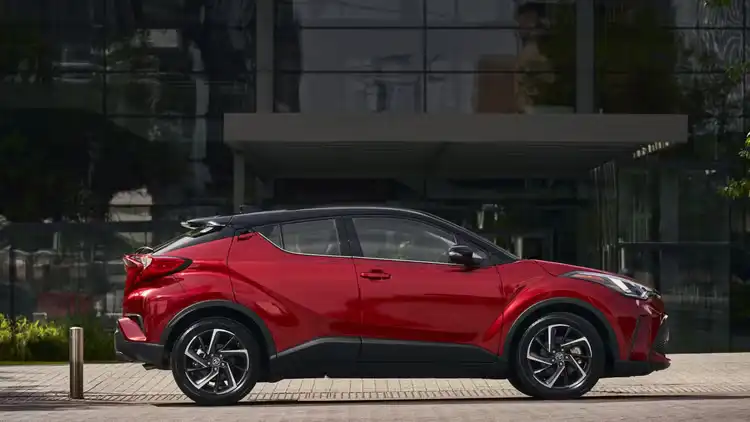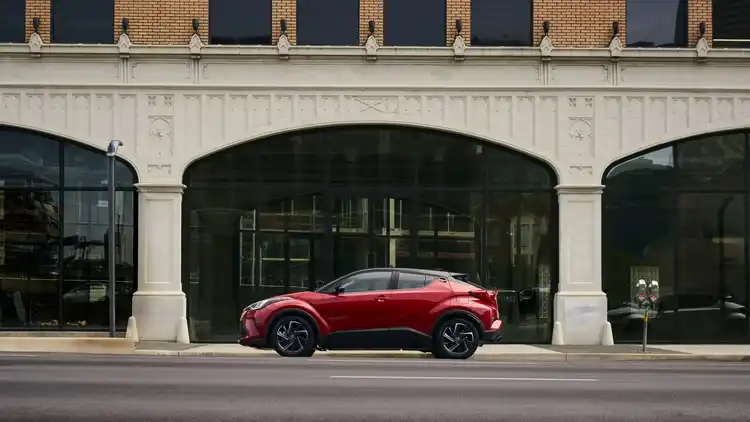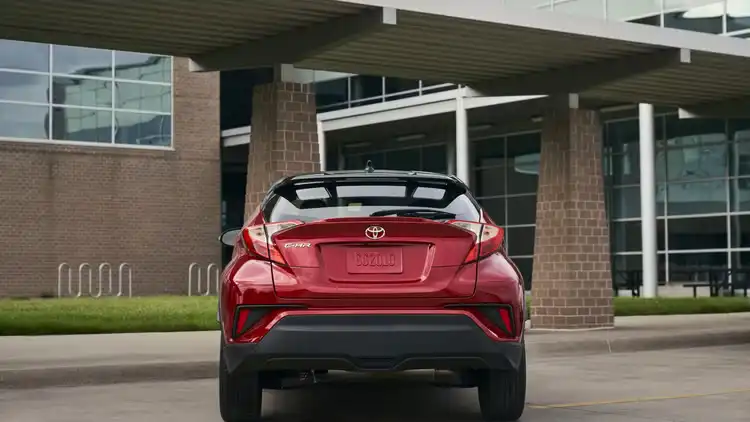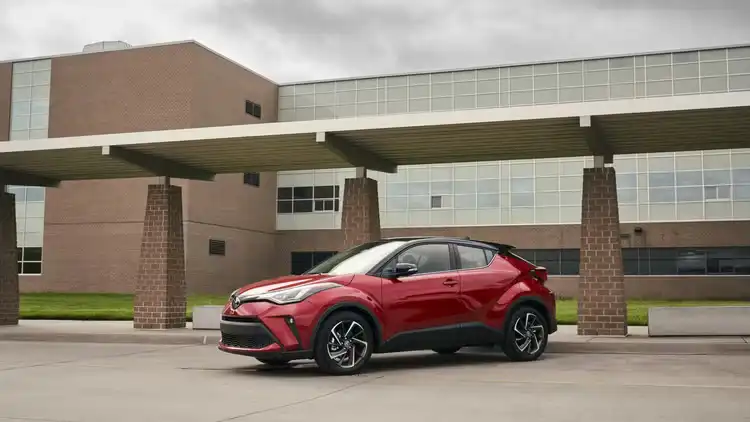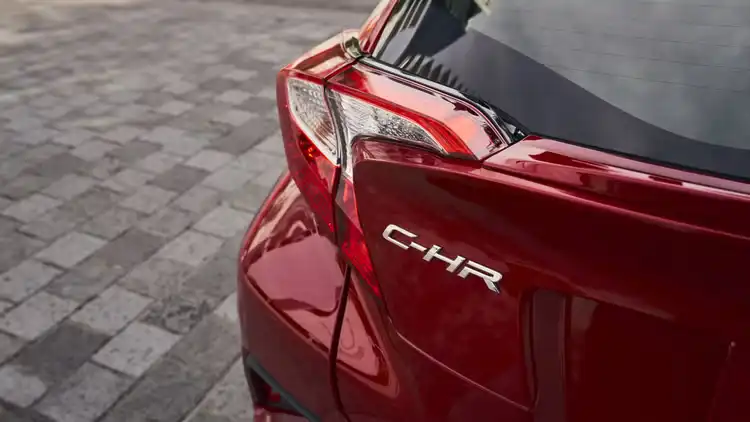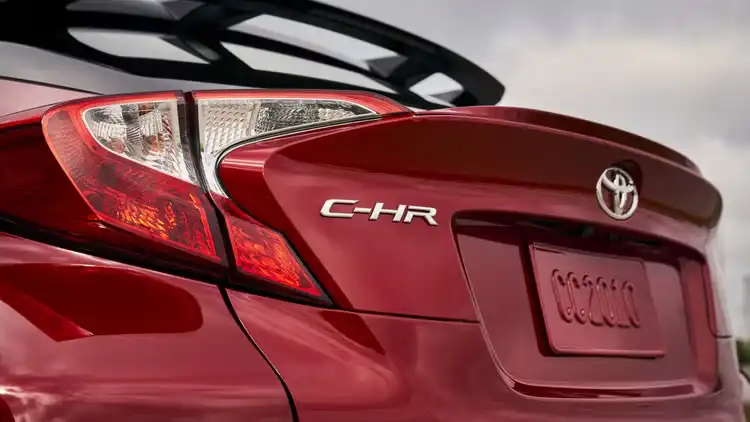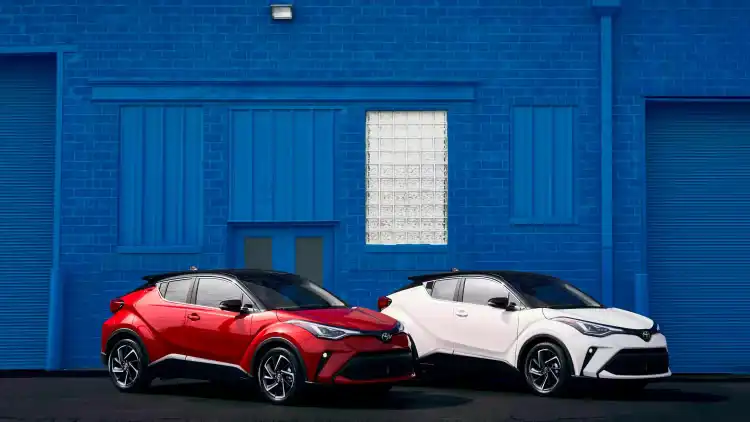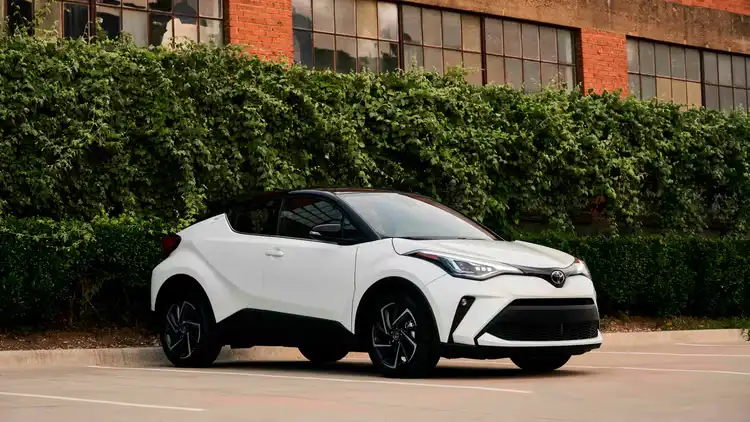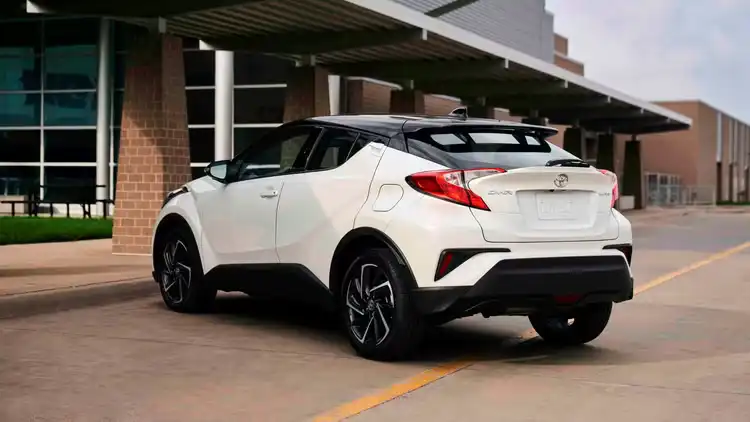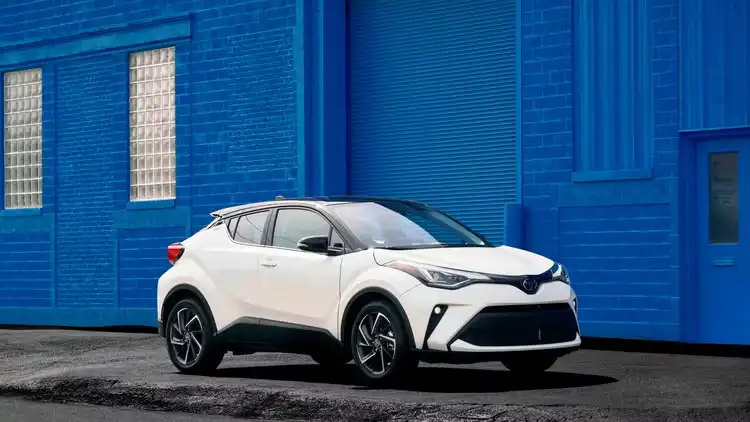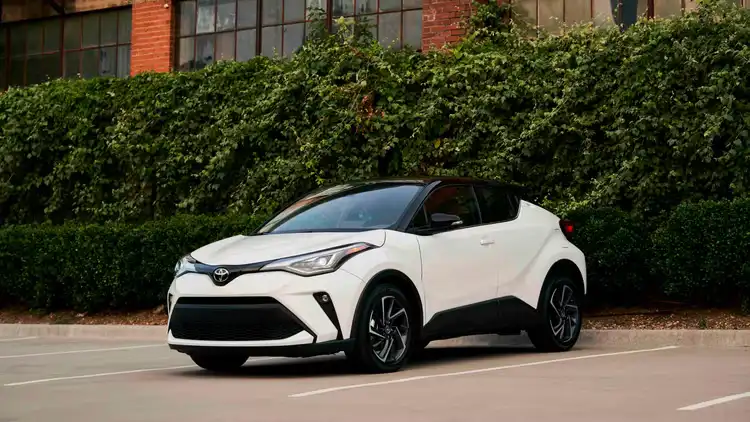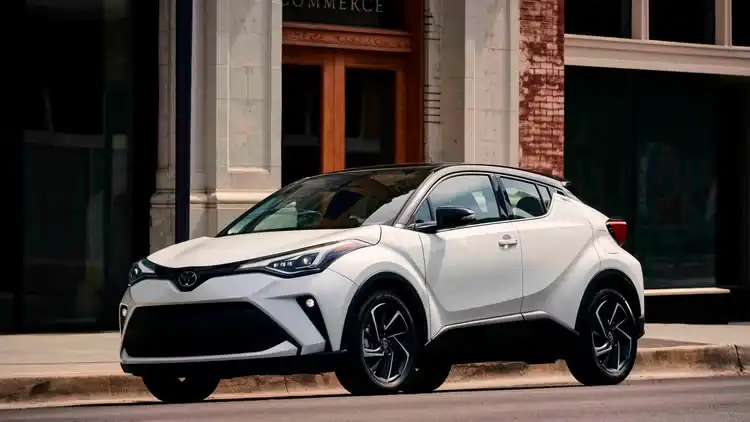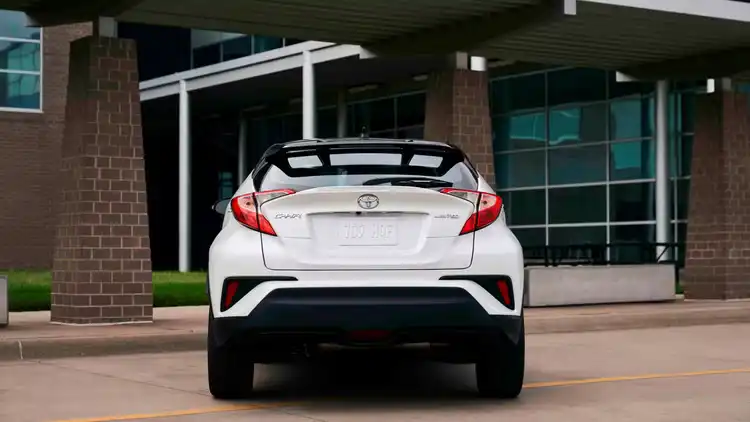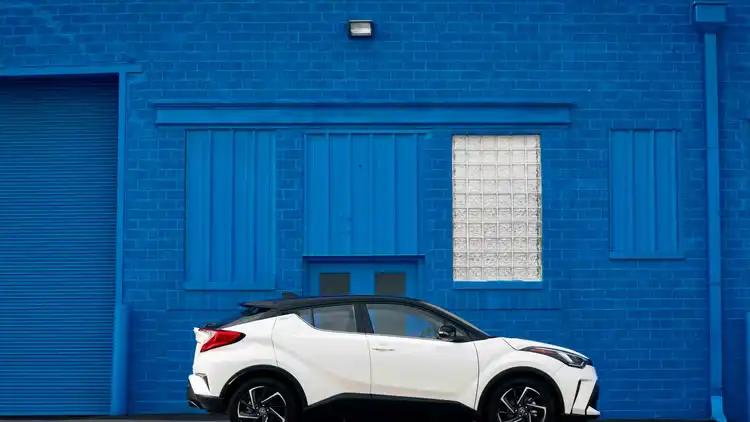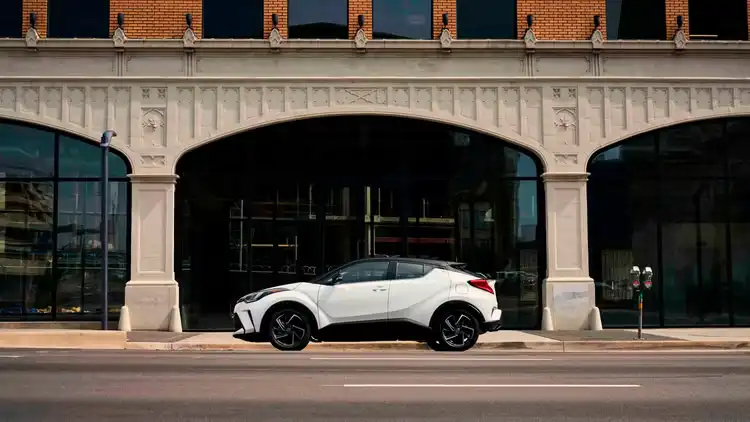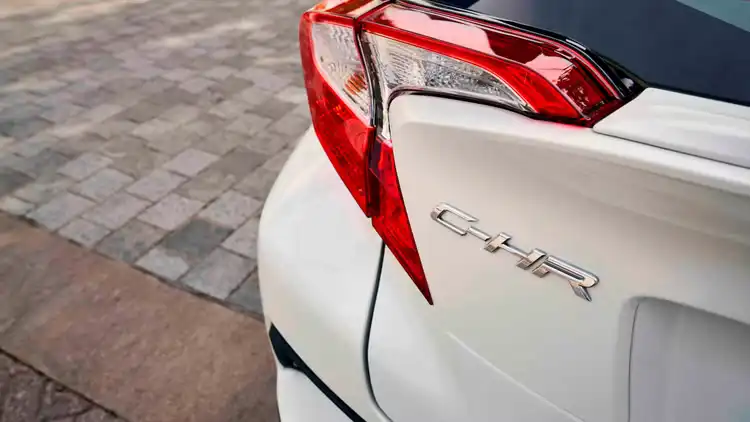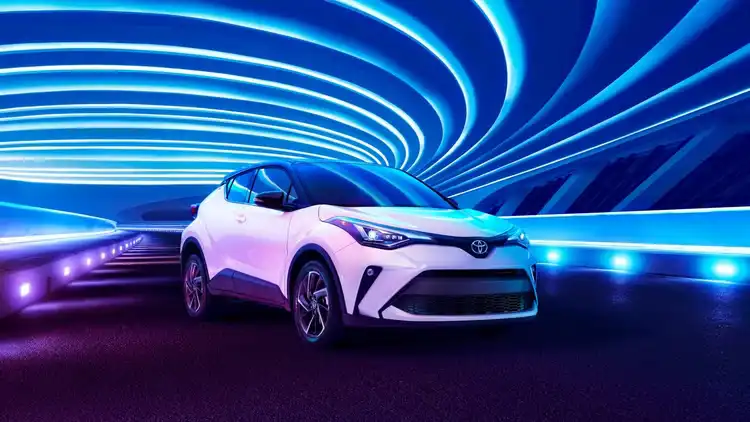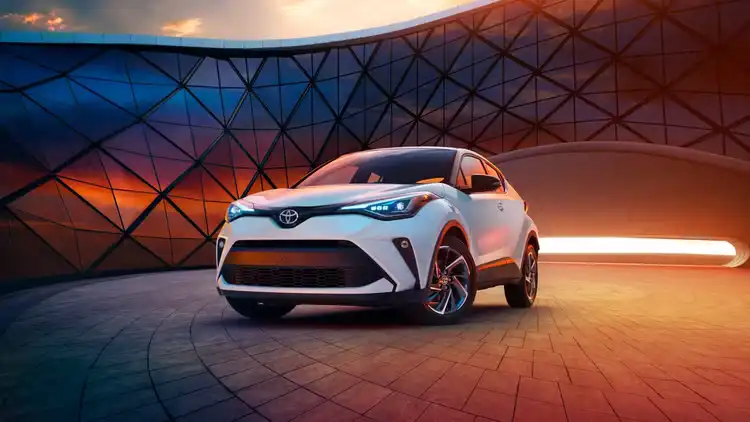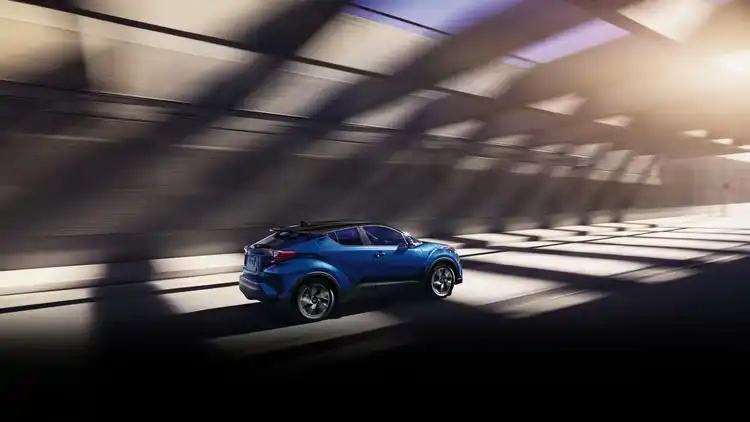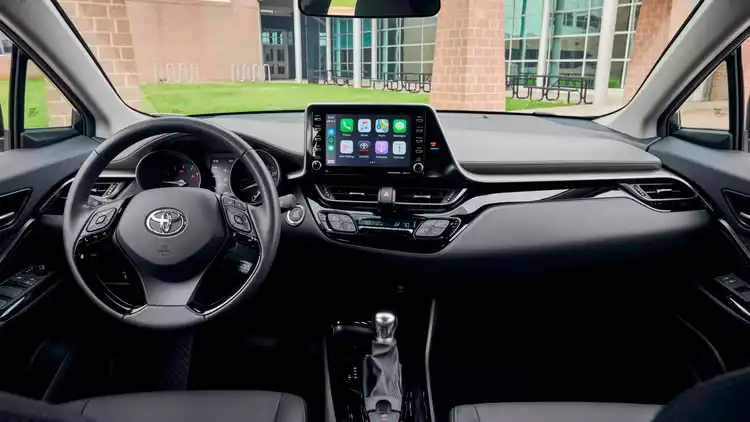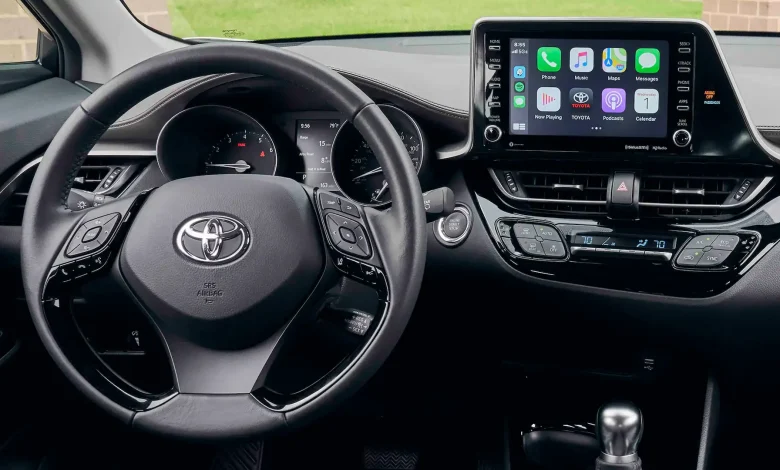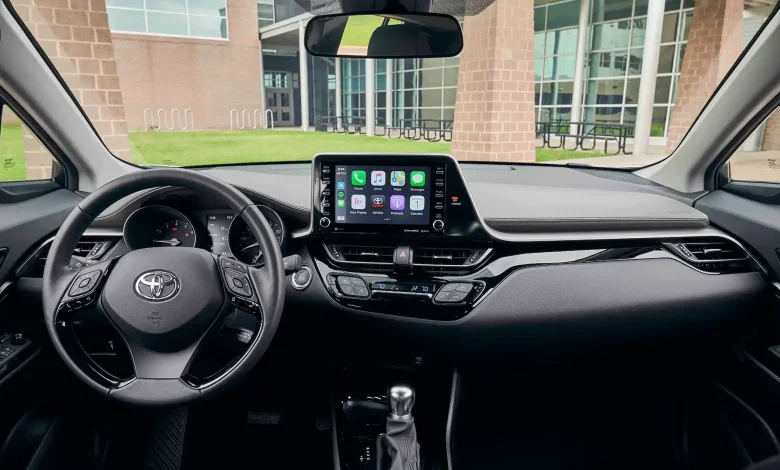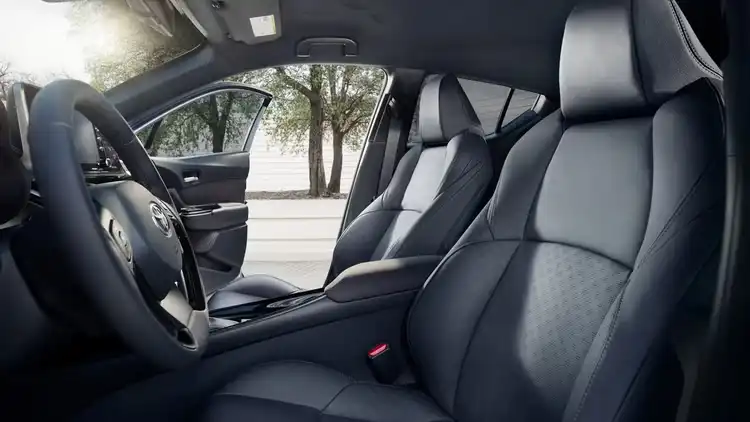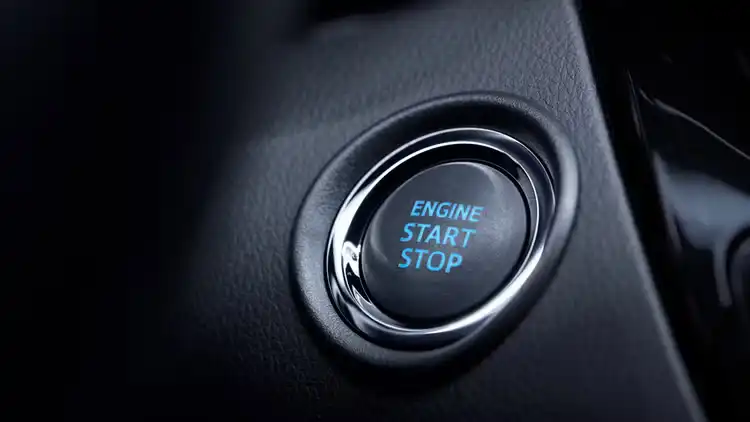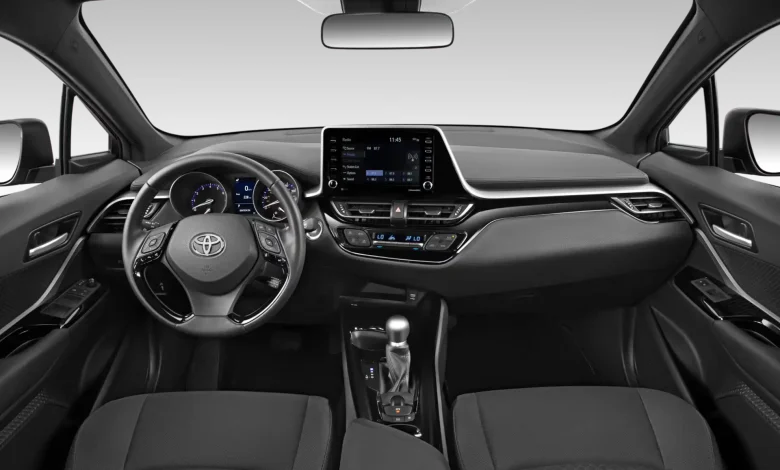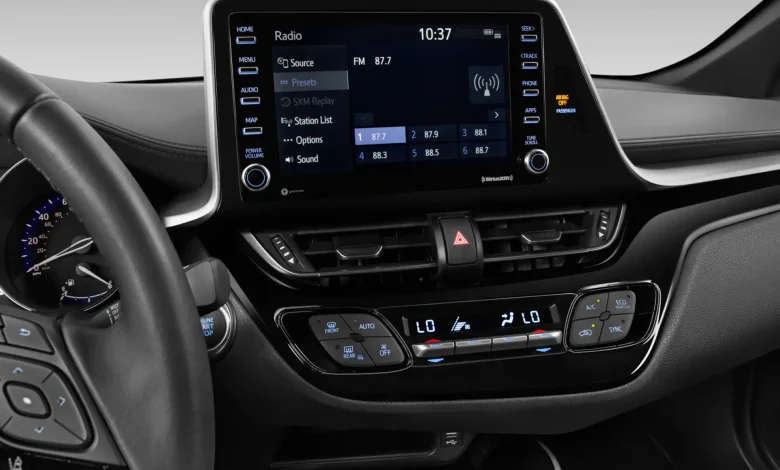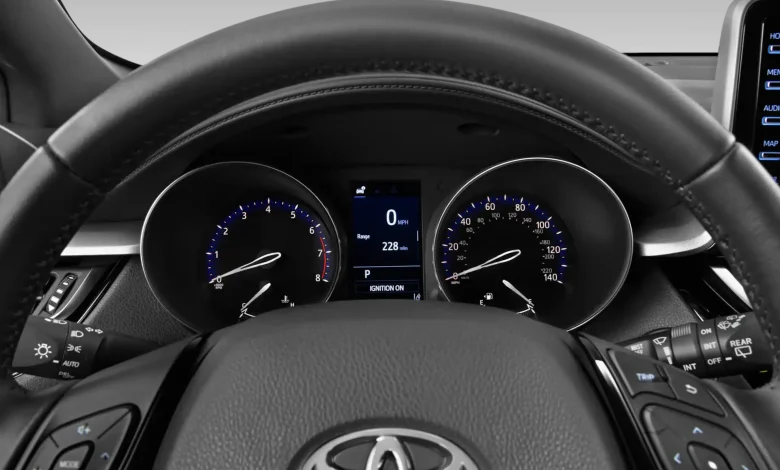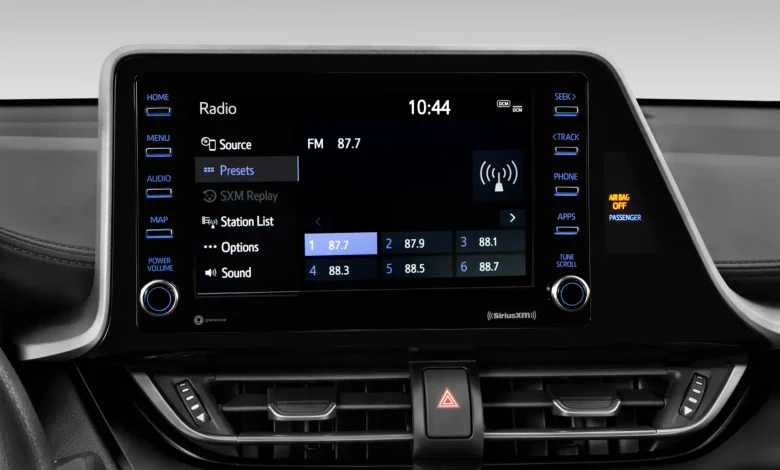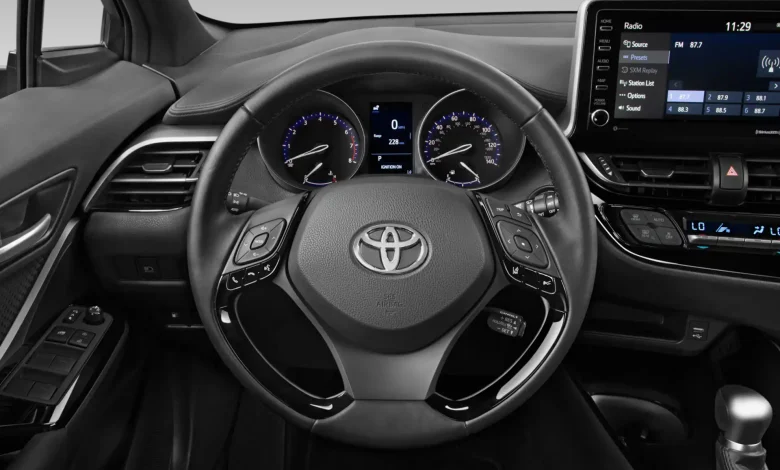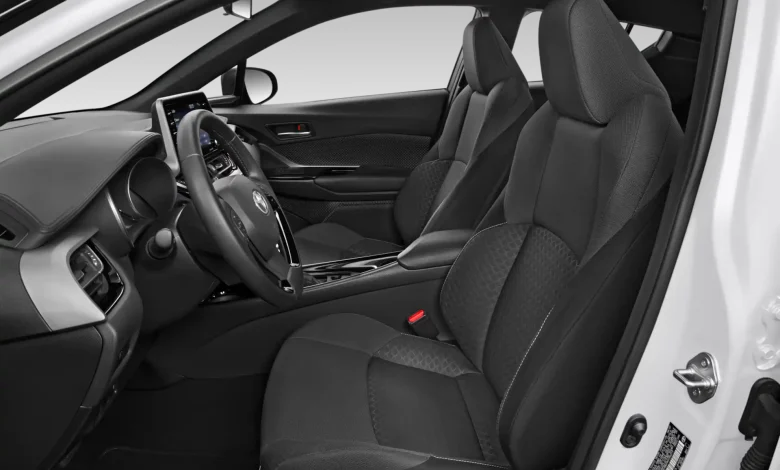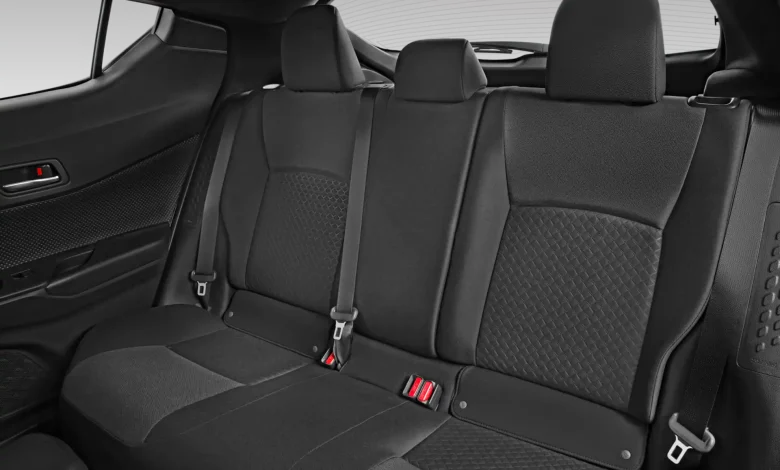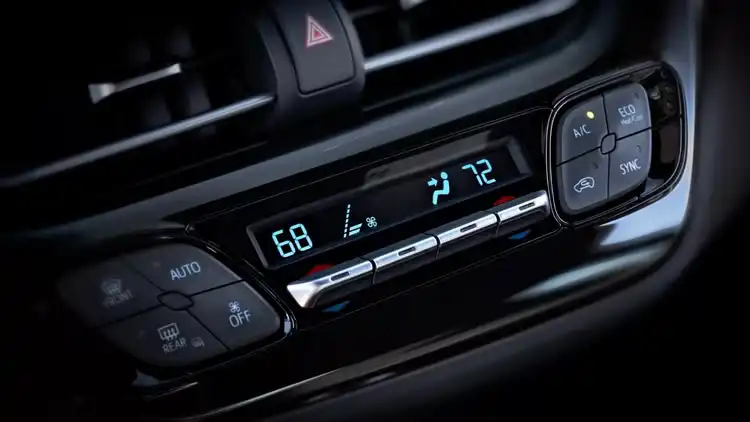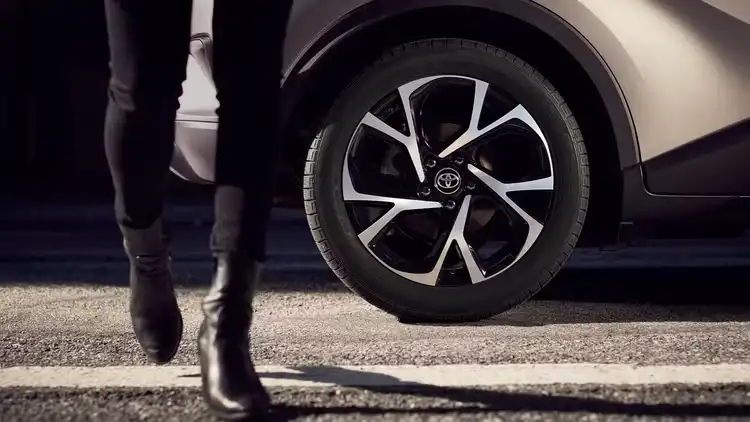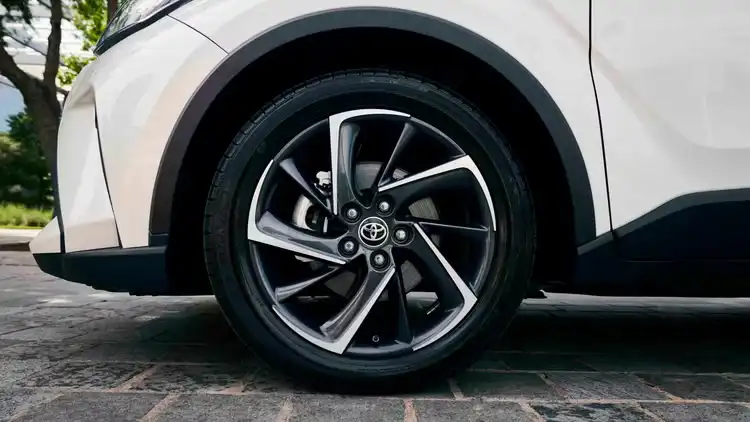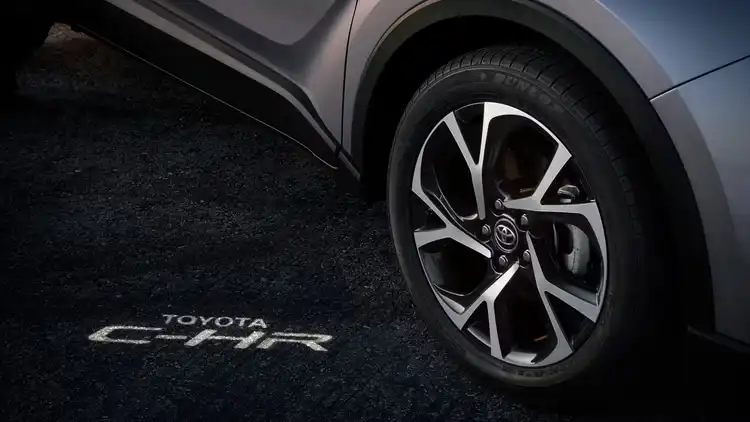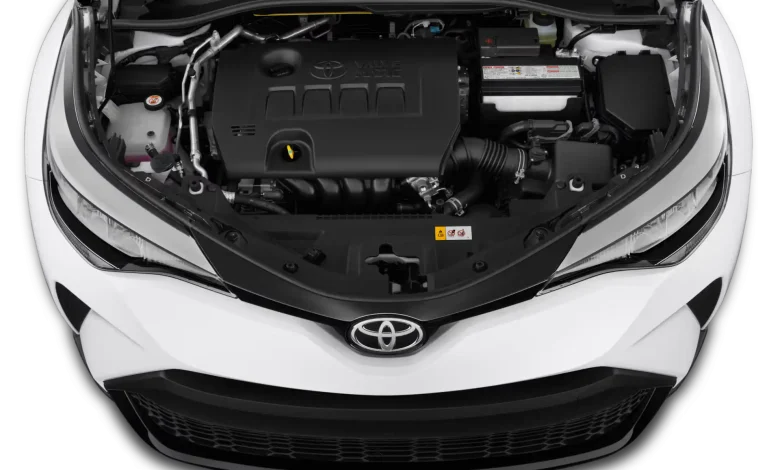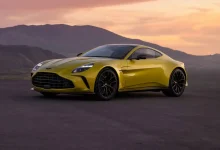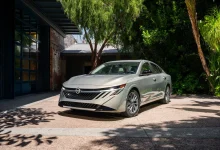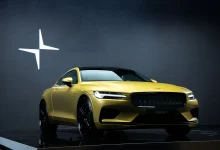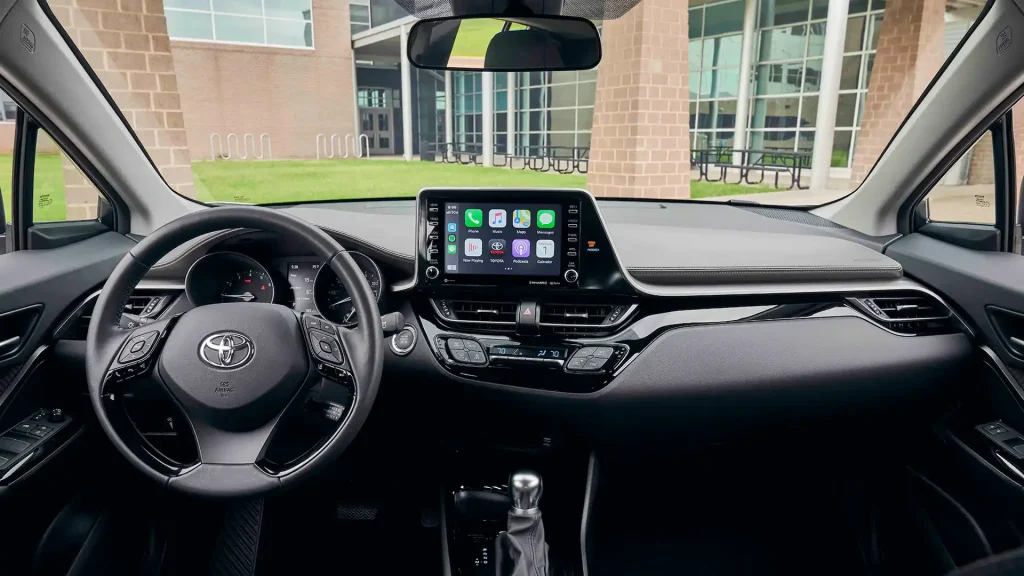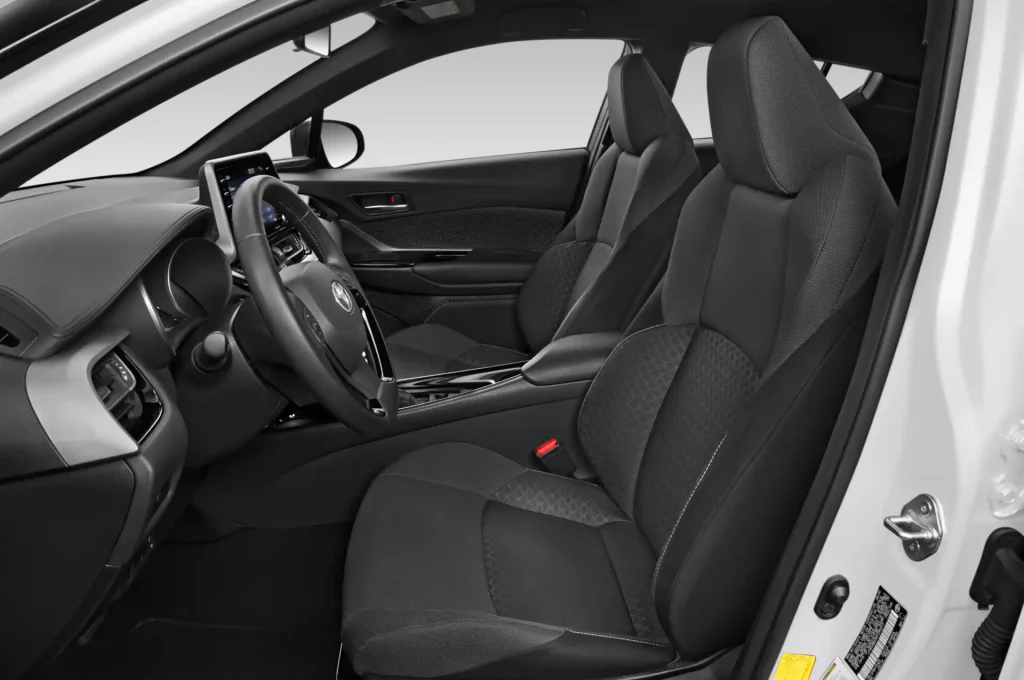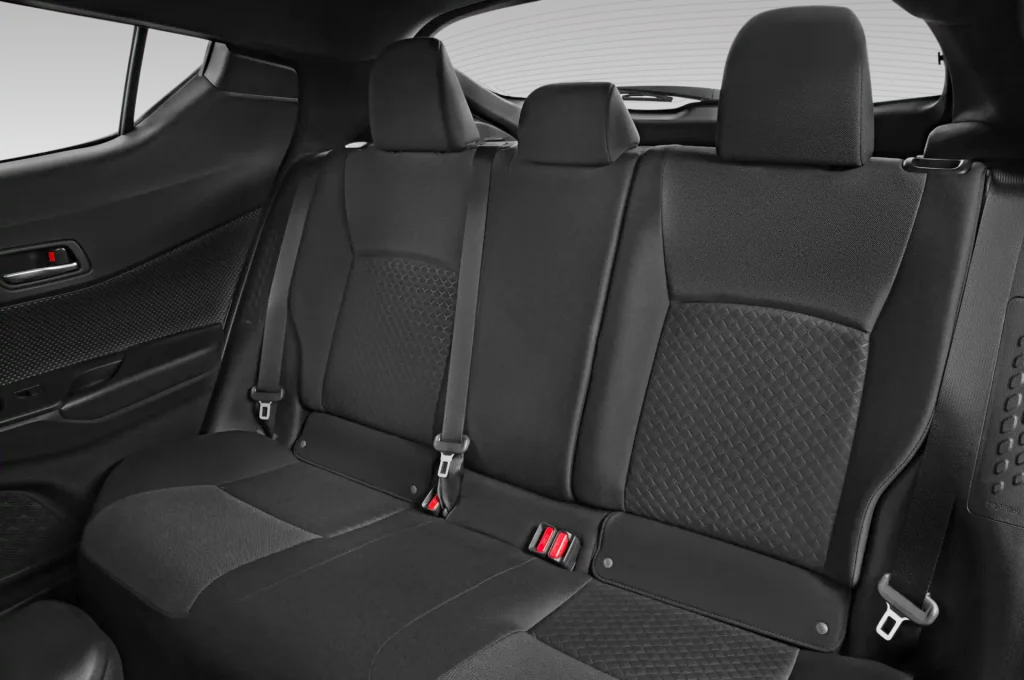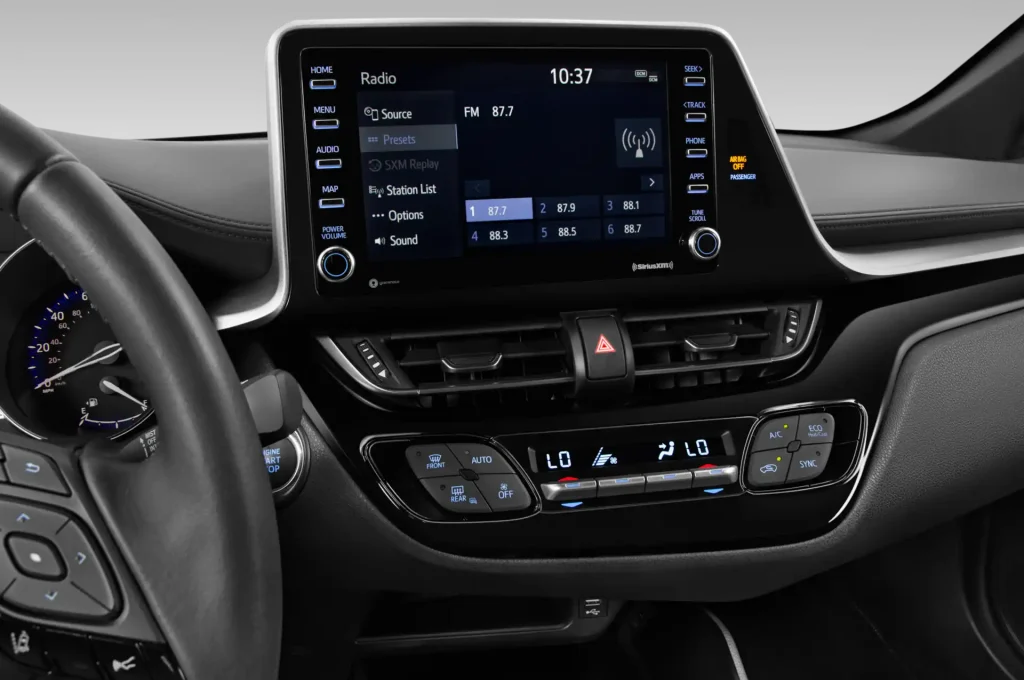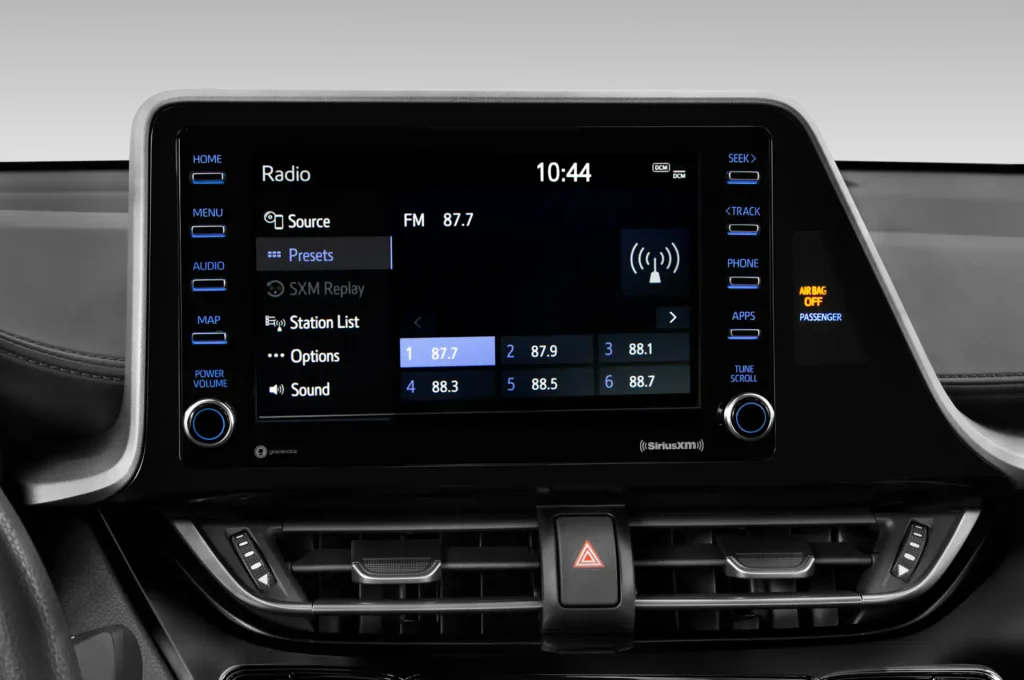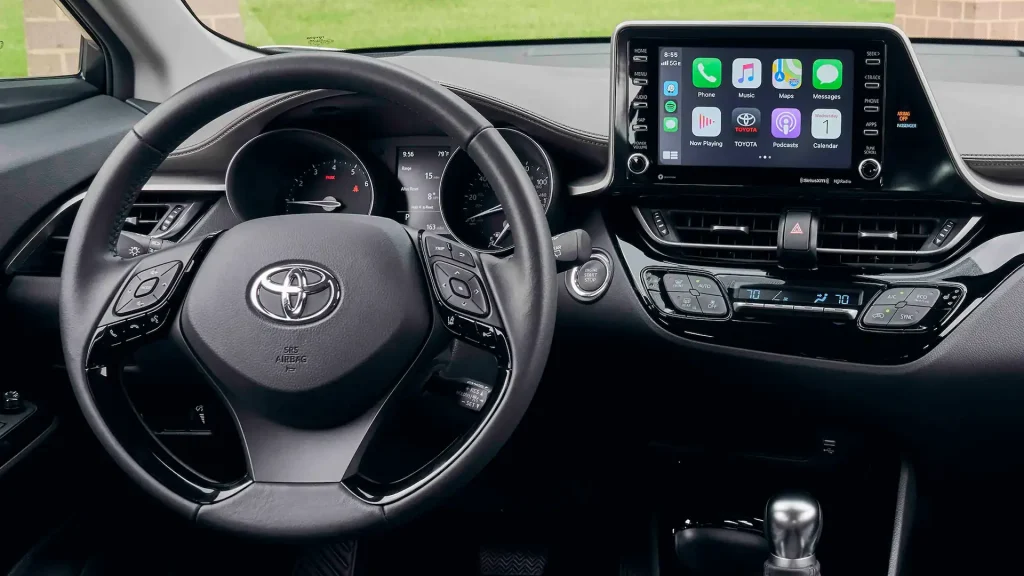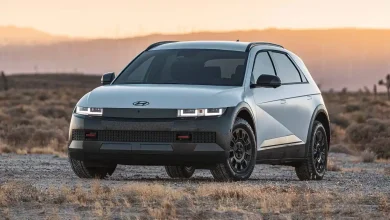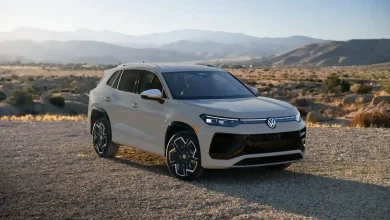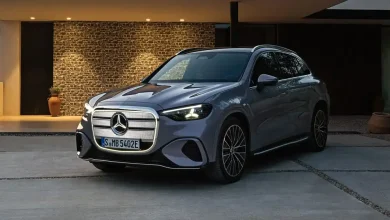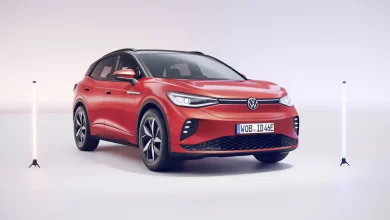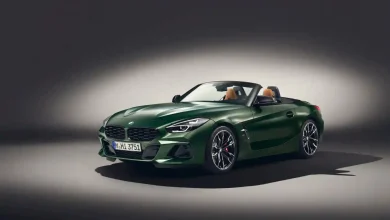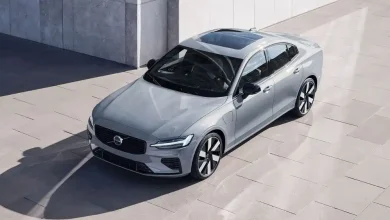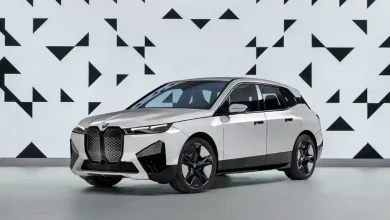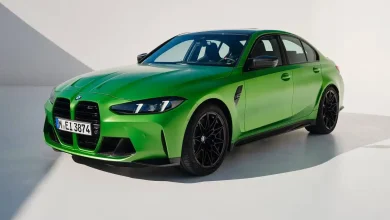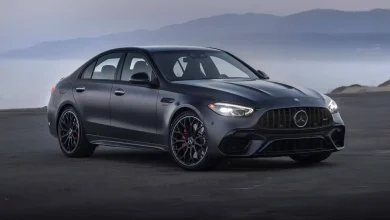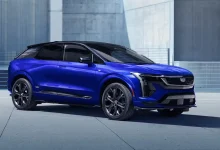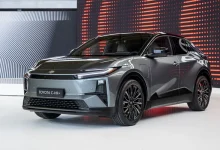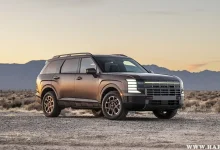- Sporty handling makes it fun to zip around turns
- Comes standard with plenty of features, including safety tech
- Swoopy styling helps it stand out
- Unlike most rivals, it doesn't offer all-wheel drive
- Even in this slow class, acceleration is lethargic
- Pervasive road and engine noise in the cabin
- Minimal cargo space, even for its small segment
Overview
The 2022 Toyota C-HR stands out with its eye-catching design and distinctive personality, but its driving experience is less than exciting. Equipped with a sluggish four-cylinder engine paired with a continuously variable automatic transmission (CVT) and front-wheel drive, the C-HR offers no option for all-wheel drive. Its acceleration is disappointingly slow, and while it fails to deliver any thrills on winding roads, it does offer a reasonably comfortable ride. The rear seat feels a bit cramped, but the interior remains practical overall. Some of the vehicle’s playful exterior design features are reflected inside, including an asymmetrical dashboard, glossy black accents, and a textured headliner.
When Is the 2022 Toyota C-HR Coming Out?
The 2022 Toyota C-HR was released in late 2021, continuing Toyota’s trend of offering a versatile, affordable, and efficient compact SUV for urban and suburban drivers alike. Its availability may vary by region, but it is widely available through Toyota dealerships.
What’s New for 2022 Toyota C-HR ?
For the 2022 model year, Toyota has discontinued the affordable base LE trim, making the XLE the starting option in the lineup. The color palette has also been updated, with Wind Chill Pearl taking the place of Blizzard Pearl and offering the option of a black contrast roof. Additionally, Toyota has confirmed that the C-HR will not return for the 2023 model year, making the 2022 version the final opportunity to own this distinctive crossover.
Pricing and Which One to Buy
The 2022 Toyota C-HR is priced starting at $25,615, with the highest trim reaching up to $28,635, depending on the selected configuration and options.
The XLE trim is equipped with a range of features that will appeal to most buyers, including 18-inch wheels, a proximity key with passive entry, blind-spot monitoring, heated exterior mirrors, and a leather-wrapped steering wheel. While Toyota offers limited options beyond accessories, we recommend sticking with the XLE trim to maintain an affordable price point for the C-HR.
Engine, Transmission, and Performance
The C-HR’s four-cylinder engine lacks the power you’d expect for a crossover of its size. It could benefit from a turbocharger, supercharger, or perhaps a boost of energy, as it struggles to accelerate with any real enthusiasm. In our tests, the C-HR took a sluggish 11.0 seconds to reach 60 mph, making it notably slower than most competitors.
Around town, the engine’s lack of power is somewhat masked by a responsive throttle that helps the vehicle get off the line with ease. However, push the accelerator too hard, and the engine revs to its limit and stays there, creating a constant drone as the continuously variable transmission (CVT) struggles to adjust its ratios in an effort to accelerate faster.
While the C-HR offers a comfortable ride over bumps, it’s not the most exceptional in its class. The suspension handles large road imperfections well, but when encountering rough, patched, or uneven pavement at higher speeds, the ride becomes noisy, and harsh impacts reverberate throughout the cabin. On the positive side, the C-HR’s steering is precise, with the front wheels responding sharply to input. The handling is nimble, body roll is well managed, and overall, the C-HR feels playful on the road.
Fuel Economy and Real-World MPG
While acceleration may not be the C-HR’s strongest suit, its fuel efficiency is where it truly excels. With EPA estimates of 27 mpg in the city and 31 mpg on the highway, the C-HR is on par with most competitors. However, in our real-world highway fuel-economy testing, it outperformed all but the Nissan Kicks, with both crossovers achieving similar results. The XLE model we tested exceeded its EPA rating, delivering an impressive 37 mpg over 200 miles.
For more details on the C-HR’s fuel economy, visit the EPA’s website.
Interior, Comfort, and Cargo
The interior of the 2022 Toyota C-HR showcases the brand’s signature quality, with materials that feel both durable and thoughtfully chosen. Aside from a couple of inexpensive plastic panels flanking the center console, the overall cabin design stands out. The faux-leather dashboard, complete with simulated stitching, exudes a more upscale feel, while diamond-patterned plastic on the doors and headliner accents add a playful touch. In low light, the trim on the dashboard of our XLE test model appeared to be standard piano black, but under direct sunlight, a metallic sheen emerged, providing a pleasant surprise. Overall, the cabin boasts a youthful, modern appeal.
However, when it comes to available features, the C-HR feels somewhat dated. The dual-zone automatic climate control is the only notable luxury offering, leaving those hoping for features like power-adjustable seats or a sunroof wanting more.
In terms of cargo capacity, the C-HR falls behind some competitors. While the Honda HR-V leads the segment with its innovative folding rear seats, offering class-above space, the C-HR’s cargo area is more modest. With the rear seats folded, we were able to fit 14 carry-on suitcases, which is average for the segment.
Infotainment and Connectivity
The 2022 Toyota C-HR features an 8.0-inch touchscreen infotainment system, positioned prominently atop the sculpted dashboard. Even the base model comes equipped with Apple CarPlay, Android Auto, and SiriusXM satellite radio. While the system prioritizes functionality over visual appeal, it offers straightforward menus that are easy to navigate, even for users with limited technological experience. This user-friendly design makes it convenient for drivers to operate while on the move.
Safety and Driver Assistance Features
The C-HR comes equipped with a full suite of standard driver-assistance features across all models. For detailed crash-test results, visit the National Highway Traffic Safety Administration (NHTSA) and the Insurance Institute for Highway Safety (IIHS) websites. Key safety features include:
- Standard automated emergency braking with pedestrian detection
- Standard lane-departure warning with lane-keeping assist
- Standard adaptive cruise control with lane-tracing assist
Warranty and Maintenance Coverage
The C-HR offers a basic warranty, with its standout feature being the two years of complimentary scheduled maintenance, setting it apart from some competitors. However, high-mileage drivers may find the Kia Soul more appealing, as it provides a much longer warranty period.
- Limited warranty: 3 years or 36,000 miles
- Powertrain warranty: 5 years or 60,000 miles
- Complimentary scheduled maintenance: 2 years or 25,000 miles
Engine Options
| Category | Details |
|---|---|
| Body Style | 5-door SUV |
| Seating Capacity | 5 passengers |
| Drivetrain | Front-Wheel Drive (FWD) |
| Transmission | Continuously Variable Transmission (CVT) |
| Fuel Tank Capacity | 13.2 US gallons (50 litres) |
| Cargo Capacity | 19.1 cubic feet (541 litres) |
| Turning Circle | 10.4 meters (34.1 feet) |
| Ground Clearance | 6.1 inches (155 mm) |
Performance
| Metric | 1.8L Hybrid (2ZR-FXE) | 2.0L Hybrid (M20A-FXS) |
|---|---|---|
| 0–100 km/h (0–62 mph) | 11.0 seconds | 8.2 seconds |
| Top Speed | 180 km/h (112 mph) | 180 km/h (112 mph) |
Engine Options
| Engine Type | 1.8L Hybrid (2ZR-FXE) | 2.0L Hybrid (M20A-FXS) |
|---|---|---|
| Power Output | 122 hp (90 kW) @ 5,200 rpm | 184 hp (137 kW) @ 6,000 rpm |
| Torque | 142 Nm @ 3,600 rpm | 190 Nm @ 4,400–5,200 rpm |
| Fuel System | Electronic Fuel Injection | D-4S Direct/Port Injection |
| Transmission | e-CVT | e-CVT |
| Fuel Consumption (Combined) | 3.8–4.0 L/100 km (61–59 mpg) | 5.2–5.7 L/100 km (45–50 mpg) |
| CO₂ Emissions | 86–92 g/km | 119 g/km |
Dimensions
| Dimension | Measurement |
|---|---|
| Length | 4,390 mm (172.8 inches) |
| Width | 1,795 mm (70.6 inches) |
| Height | 1,565 mm (61.6 inches) |
| Wheelbase | 2,640 mm (103.9 inches) |
| Front Track | 1,550 mm (61.0 inches) |
| Rear Track | 1,550 mm (61.0 inches) |
| Curb Weight | 1,460–1,510 kg (3,219–3,329 lbs) |
Final Verdict
The 2022 Toyota C-HR is an excellent option for those seeking a stylish, efficient, and well-equipped subcompact SUV. Its bold design, strong safety features, and solid fuel economy make it a great choice for city driving. However, it may not be the ideal option for those needing more power or space. It offers a unique blend of practicality and style at an affordable price point.
2022 Toyota C-HR Videos
